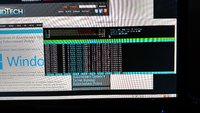S
sulu
Guest
This thread looks more and more like a bazar scene from a 1001 nights movie - very entertaining though! 
@Yuji:
I suggest you see the Pyra for what it is: Unless you are in a very special situation with very unique requirements, then the Pyra will just be a toy for you.
And I suggest that you see money for what it is: The amount you need to run your life (including all obligations) is essential and should not be consumed by non-essential expenses. Any amount beyond that is basically worthless.
So the question of whether the Pyra is worth its money boils down to whether this toy fits in your "worthless excess budget". And if it conflicts with other toys within that budget, then you need to prioritize which toy is more important to you.
If you take into account, that the Pyra will fulfill ordinary desktop tasks for some users then 4GB is not overkill, especially if you consider that the SoC board will have to do that without upgrades for some years. If you belong to the people having lots of tabs open in your browser then filling a GB or two of RAM with it alone is no problem. Then you might also have some documents open in Libreoffice and a GUI e-mail program lurking in the background and you'll find yourself eating up your RAM in chunks of hundreds of MB in no time. I'm not saying it wouldn't work well with 2GB, but 4GB gives you the luxury of not having to think about RAM consumption (at least for now).The OMAP5 can use up to 8GB, but honestly I think for the most part the 4GB the Pyra will get is overkill, I have been using the OMAP5 devboard for a couple years now and never found any practical application that will drive my Devboard to use all of the 2GB ram it has. 4GB does market better I suppose.
You paid with your freedom (and the freedom of your family, friends and acquaintances) when you agreed to enter the golden cage and give Apple access to your personal data (and the data of all the people that trusted you to handle theirs with care).My Iphone 6s was about the same as the Pyra, expect it has 64 gb...
So an Iphone isnt that expensive, unless you wants the newest modell, ...
@Yuji:
I suggest you see the Pyra for what it is: Unless you are in a very special situation with very unique requirements, then the Pyra will just be a toy for you.
And I suggest that you see money for what it is: The amount you need to run your life (including all obligations) is essential and should not be consumed by non-essential expenses. Any amount beyond that is basically worthless.
So the question of whether the Pyra is worth its money boils down to whether this toy fits in your "worthless excess budget". And if it conflicts with other toys within that budget, then you need to prioritize which toy is more important to you.


